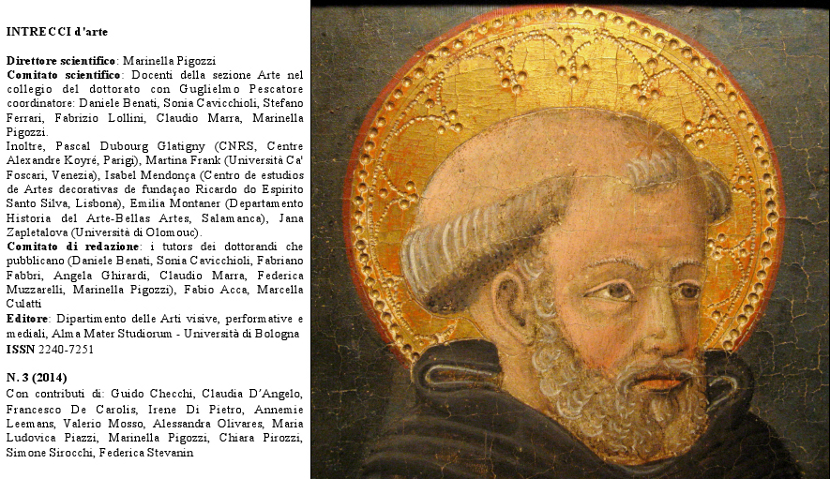Tra storia e leggenda. Indagini sul network artistico tra Sofonisba Anguissola, Giulio Clovio e Levina Teerlinc
DOI:
https://doi.org/10.6092/issn.2240-7251/4580Parole chiave:
Sofonisba Anguissola, Giulio Clovio, Levina Teerlinc, Annibal Caro,Abstract
L’articolo indaga il rapporto tra due miniatori: il miniatore croato Giulio Clovio e la miniatrice fiamminga Levina Teerlinc. La ricerca parte da una lettera di Annibale Caro databile agli anni ’40 del Cinquecento, scritta a nome di Giulio Clovio. La lettera è indirizzata a una giovane miniatrice, che non è nominata ma che può essere identificata con Levina Teerlinc, le cui caratteristiche corrispondono al profilo della destinataria. Fulcro dello scritto è uno scambio di autoritratti fra Clovio e la donna; la prova che Levina Teerlinc inviò a Clovio un autoritratto si trova nel testamento dell’artista croato, che ricorda «il ritratto di Livinia meniatrice».La storiografia ha collegato questa vicenda al ritratto di Giulio Clovio dipinto da Sofonisba Anguissola, nel quale il croato è effigiato con un ritratto miniato in mano. Federico Zeri, proprietario del ritratto fino al 1998, riteneva che questa miniatura raffigurasse l’autoritratto di Levina Teerlinc, mentre l’articolo propone trattarsi di un autoritratto di Sofonisba Anguissola. La dimostrazione è data dal confronto con un altro ritratto della pittrice cremonese, quello del suo maestro Bernardino Campi, effigiato mentre ritrae lei stessa. In entrambi i dipinti il maestro ritrae l’allieva Sofonisba: Bernardino Campi è il suo maestro di pittura, mentre Giulio Clovio è il suo maestro di miniatura. Clovio, come Campi, viene raffigurato nell’atto di dipingere, con il pennello in mano e lo sguardo rivolto allo spettatore.
L’articolo descrive esaustivamente la provenienza del ritratto di Clovio e dà particolare rilievo al tipo di cappello con cui è raffigurato il miniatore, confrontandolo con quello, simile, indossato da un suo contemporaneo inglese.
Infine, lo studio propone di dare risposta ad alcune questioni irrisolte sul rapporto tra Clovio e Levina: indica Francisco de Holanda come intermediario tra i due, rettifica le date di nascita e di matrimonio di Levina e conferma la sua assenza dalle Fiandre prima del suo soggiorno inglese. Non è quindi escluso che Levina Teerlinc abbia trascorso un periodo in Italia negli anni ’40 del Cinquecento e sia stata allieva di Giulio Clovio.
Downloads
Pubblicato
Come citare
Fascicolo
Sezione
Licenza
Copyright (c) 2014 Annemie Leemans
I diritti d'autore di tutti i testi nella rivista appartengono ai rispettivi autori senza restrizioni.
La rivista è rilasciata sotto una licenza Creative Commons Attribuzione 4.0 Internazionale (codice legale completo).
Vedere inoltre la nostra Open Access Policy.
Gli autori mantengono la responsabilità del testo e delle immagini. Le immagini e le fotografie possono avere licenze differenti.
L’editore è a disposizione degli eventuali proprietari dei diritti sulle immagini riprodotte nel caso non si fosse riusciti a reperirli per chiedere la debita autorizzazione.
Metadati
Tutti i metadati dei materiali pubblicati sono rilasciati in pubblico dominio e possono essere utilizzati da ognuno per qualsiasi scopo. Questi includono i riferimenti bibliografici.
I metadati – riferimenti bibliografici inclusi – possono essere riutilizzati in qualsiasi formato senza ulteriori autorizzazioni, incluso per scopo di lucro. Chiediamo cortesemente agli utenti di includere un collegamento ai metadati originali.






